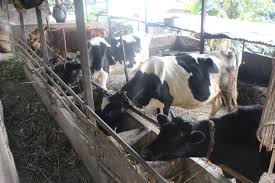 Guidelines for Environmental Management of Dairy Farms and Gaushalas
Guidelines for Environmental Management of Dairy Farms and Gaushalas
July 2020
Source: CPCB
Courtesy: SPCB Sikkim
The major environmental issues of dairy farms and gaushalas are discharges of dung and urinal wastewater. The poor handling of dung and wastewater causes odour problem also. A Bovine animal, on an average, weigh 400 kg and discharges 15-20 kg/day of dung and 15-20 litres/day of urine. Many dairy farms and gaushalas discharge the cattle dung along with wastewater into the drains, leading to clogging, which ultimately reach to rivers and create water pollution. Also, these clogged drains become breeding ground for mosquitoes creating health hazards and odour nuisance. The dung produces many gases/compounds such as carbon dioxide, ammonia, hydrogen sulphide, methane, etc. which emitted into the atmosphere and responsible for odour issue. The disposal of cow/buffalo dung is the biggest challenge in dairy farms and gaushalas. However, cattle dung, if effectively utilised, can be a resource of manure & energy. The cattledung contains many beneficial constituents which may be used as fuel source either by direct combustion (dung wood) or converted to biogas, soil conditioner, fertilizers, material for wall plastering, construction of granaries, livestock & fish feeding, etc. Now, following guidelines are framed for management of wastes from dairy farms and gaushalas.
» Guidelines for Environmental Management of Dairy Farms and Gaushalas [PDF, 131 Kb]